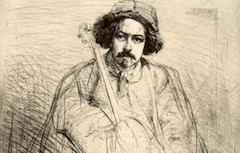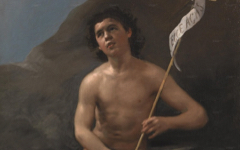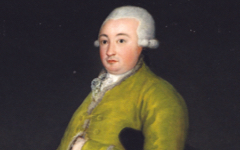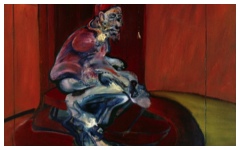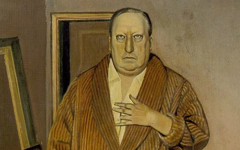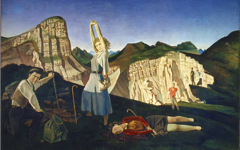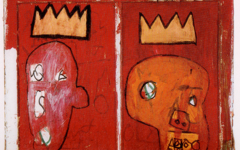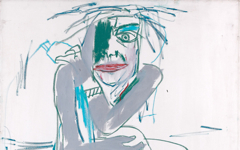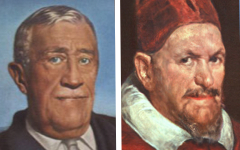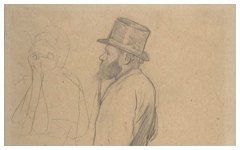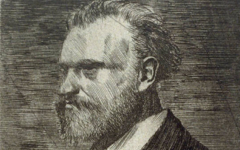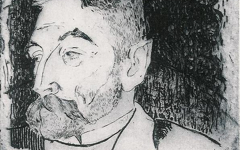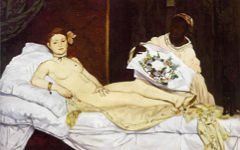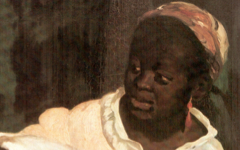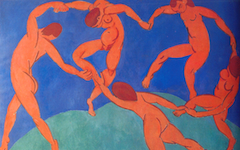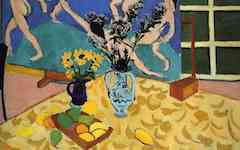Artist as Other Artist
Saul Bellow’s son, a writer too, once explained how over the years he had incorporated aspects of his late father’s being into himself: “ways of thinking, particular expressions, a certain way of looking at the world.” Now that he was dead, he wrote, “my father, though absent, is deeply, unpredictably, stubbornly present in me.”{ref1} Poetic painters feel the same way about earlier masters whose work they have studied so intently that the other artist’s characteristics, brushstrokes, subject matter and ways of thinking are deeply embedded in themselves. This means that Giorgio Vasari’s account of how the soul of one Renaissance artist was kept alive in the next is not a mere literary flourish (as generally explained) but a very accurate description of how one artist feels about another. This deep sense of identification with their earlier peers can be seen in art from many periods and many countries.
Most Recent Articles
All Articles (Alphabetical by Artist, then Title)
In a short addendum to Part 1, see how Balthus conveyed his alter ego
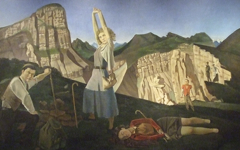
Balthus’ The Mountain (1937) Part 2
See how Basquiat's Boone turns facial resemblance on its head and becomes Basquiat.

Basquiat’s Boone (1983)
"Mistakes" in representing reality are cues to the scene's underlying meaning

Caravaggio’s Martyrdom of St. Ursula (1609-10)
A long-mysterious image succumbs to interpretation if seen through a different paradigm
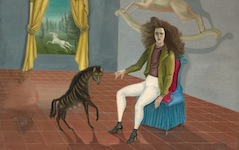
Carrington’s Self-portrait (c.1937-8)
Cranach saw a resemblance in someone else's work and made it his own, a common practice in poetic art
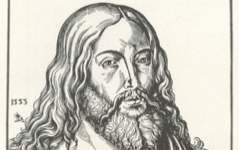
Cranach’s Form of the Body of ...Jesus (1553)
Not everything about this self-portrait is quite as obvious as it seems

De Chirico’s Self-Portrait (1954)
See how one form can metamorphose into another while bringing with it the form's original meaning
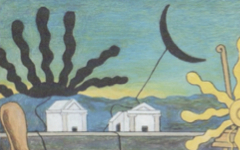
De Chirico’s Sun on the Easel (1973) Part 2
If you can't make a sense of an image beyond what it appears to be, keep looking until you can. Come back to it, time and again, until you do.

Degas’ At the Races in the Countryside (1869)
See what Degas makes of a Delacroix and thus, perhaps, what you should too....

Degas’ Study of Delacroix’s Entry of the Crusaders into Constantinople (c.1860)
Find out how a little knowledge of studio life goes a long way
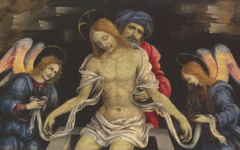
Filippino Lippi’s Dead Christ (c.1500) and the Artist’s Turban
Learn how an artist can link himself through music to great painters before him
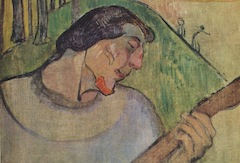
Gauguin’s Self-portrait with a Mandolin (1889) and The Player Schneklud (1894)
See how a classical legend becomes the perfect setting for an allegory on the artist's studio
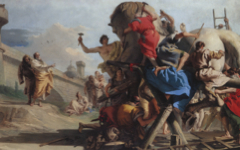
Giandomenico Tiepolo’s Building of the Trojan Horse (c.1773-4)
Don't confuse illusion with likeness in portraits; they are different
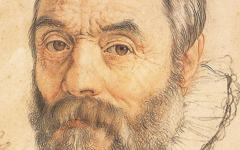
Goltzius’ Portrait of Giambologna (1591) and Palma Giovane (1591)
Why would a great master when copying a portrait by an earlier master change the features of the portrait sitter?

Ingres’ Copy of Holbein’s Henry VIII
How an artist, the artist's lover, is Ingres' own androgynous reflection
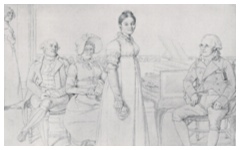
Ingres’ The Forestier Family (1806)
The universal features of Frida Kahlo's art are what links her to the canon, not the details of her private life
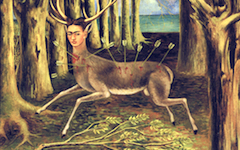
Kahlo’s The Wounded Deer (1946)
An obvious example of how later artists can see in an artist's work what we, ordinary viewers, do not.
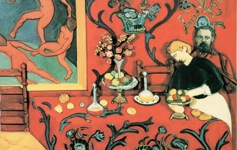
Larry Rivers’ Déjà vu and the Red Room: Double Portrait of Matisse (1996)
This early painting by Manet has always troubled interpreters because it seems to make no apparent sense. Its explanation here, though, will help you understand paintings by Manet, Velazquez and other artists too.
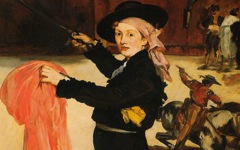
Manet’s Mlle. V in the Costume of an Espada (1862)
Learn something about Manet's first major painting that has never been noted, except by artists.
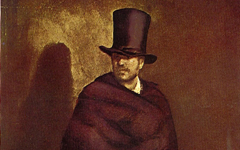
Manet’s Absinthe Drinker (1858-9)
One of the many ways artists "paint themselves" is by painting others as earlier great masters.
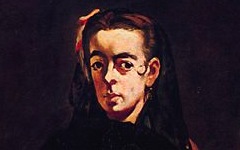
Manet’s Angelina (1865)
See how Manet identifies with a female artist of his own acquaintance, probably without her even knowing

Manet’s Before the Mirror (1876)
Everyone knows that Boating is a masterpiece. Why is it so difficult to explain?

Manet’s Boating (1874)
Léon Leenhof, Manet's young son, is posed in this print as though he is selecting paint from his tray (palette) and is about to apply it to the sheet of paper we are looking at.
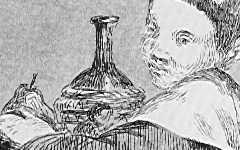
Manet’s Boy Carrying a Tray (1860-61)
Artists do not have to use their own features in a portrait of someone else. There are other ways of identifying with the sitter as Manet demonstrates in this portrait.

Manet’s Boy with Cherries (1860)
Find out how Manet's observations of scenes in Parisian cafés are really something else entirely

Manet’s Café-Concert (1878)
A wonderful example of how blind anyone can be using the wrong form of visual perception

Manet’s Exhibition of Paintings (c. 1876)
Find out how the viewer in this garden scene is really inside Manet's mind
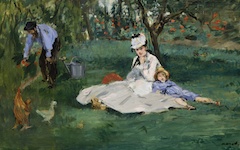
Manet’s Monet Family in the Garden (1874)
See how Manet's identification with Courbet is recognized by a later artist who then used it in his portrait of yet another artist.

Manet’s Portrait of Courbet
Learn how one artist shows their identification with another

Manet’s Self-Portrait with a Skull-Cap (1878-9)
Skating on ice is like drawing lines on the mirrored surface of the artist's mind

Manet’s Skating (1877)
Once you know what to look for, Manet's tricks are obvious

Manet’s The Races in the Bois de Boulogne (1872)
See how smoke and mirrors turn the outside of Manet's studio into the inside
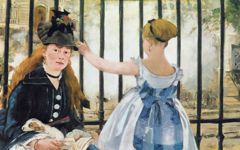
Manet’s The Railway (1873)
This magical composition hides a complex thought of seeming effortless construction: a masterpiece of the first order

Manet’s Tragic Actor (1865-6) Part 1
There is more to the Tragic Actor than meets the eye. Find out what's there that others cannot see.
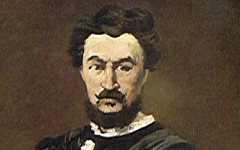
Manet’s Tragic Actor (1865-6) Part 2
See how Matisse's identification with an earlier artist is conveyed in a businessman's portrait

Matisse’s Portrait of Auguste Pellerin II (1917)
© Simon Abrahams. Articles on this site are the copyright of Simon Abrahams. To use copyrighted material in print or other media for purposes beyond 'fair use', you must obtain permission from the copyright owner. Websites may link to this page without permission (please do) but may not reproduce the material on their own site without crediting Simon Abrahams and EPPH.
